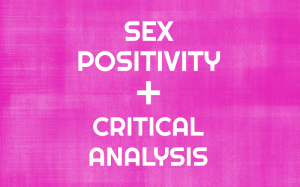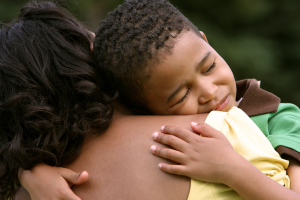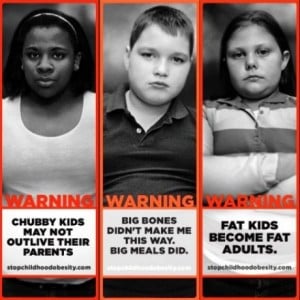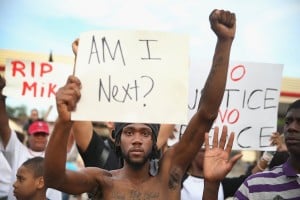
Source: Onyx Truth
It was already a stressful Saturday when I walked into the neighborhood coffee shop with my toddler.
The owner has a little one of her own and kept a playpen filled with toys and books for babies. My son made a beeline for the toys as I ordered an Americano from the barista, whose overt and over-the-top friendliness already suggested that he wanted more than just an exchange of money for coffee. I purposely diverted my gaze, lest he pick up more cues to engage.
He persisted: “What’s your name?” “Do you live around here?” “Do you sing? I heard you whistle just now!” “Could I sample your whistle?”
“No,” I replied to last of them.
By then, the exchange got ugly as he read my need to decompress and exist in silence as “negativity” and “anger.”
The exchange was not unlike instances of street harassment I faced on a daily basis — and those depicted on Hollaback!’s (now infamous) video.
The difference, however, was that I am a Black woman, my assailant was a white man, and it didn’t occur on the street.
Critics of the Hollaback! PSA immediately highlighted the racial implications of the video, saying that although the creators acknowledged that men of every race were guilty of harassment, men of color were the ones who mainly made the cut.
While Hollaback! stated their regret for the “unintended racial bias,” the effects were symbolic of the narrative that has defined the movement so far: Street harassment is only suffered by White women with only Black or Brown male assailants and only in urban environments.
To say that it puts men of color on the defensive is putting it lightly, but the accusations have some of them dismissing the movement completely.
The narrative also has the effect of erasing the experiences of women of color and both trans women and trans men, for whom the effects of street harassment are sometimes a matter of life or death.
Street harassment is finally getting its due attention in national conversation, but there are key elements of the issue that get little attention — or are entirely left out. And while this isn’t a complete list, let’s talk about some of them.
1. Street Harassment Doesn’t Always Happen in the Street
What is considered street harassment?
A good working definition comes from the Brooklyn-based anti-street harassment group, No Disrespect: We understand street harassment to be a range of unwelcome, uninvited behavior targeted at women, queer, trans, and/or gender non-conforming people in public spaces.
This broad definition not only leaves enough room to include non-sexual advances like the one in the coffee shop, but also acknowledges that harassment takes place in “public spaces” and not just the street.
Living in an urban, mainly pedestrian environment means that this particular form of harassment gets highlighted as “unwelcome behavior” that literally occurs on the street.
But in any forum where they are asked, women will highlight instances where men felt entitled to their space, time, and attention that may consequently turn verbally or physically violent when the sentiment was not returned in any and all public spaces.
Determining public space may be one of the biggest challenges in identifying what harassment may look like. Is a bar or a club a public space? How about a mall or a concert? Social media, forums, or text messages, too?
A good way to think about it is that if the primary reason for being in a particular space is not to court a person, then it’s safe to assume that the “public space” criteria could be invoked in an instance of harassment.
And if you’re still confused about where it’s okay to catcall, this article and this flow-chart may help.
2. Street Harassment Means Different Things to Different People
Are benign “good morning” or “hello, beautiful” considered street harassment? It depends on whom you’re talking to and how it’s said.
My West Indian sensibilities mean that I nod a “good morning” to the old men on the corner. They reply, “Good morning” and may inquire about the baby. The exchange doesn’t go further than that.
But I have also received “good morning” and “God bless you” that I ignore because of the tone and therefore, the expectations that an acknowledgement may carry.
This confusion of whether or not a “hello” is or is not acceptable also comes with an easy fix: If you could easily translate that greeting from a straight man to another random straight male, then you may assume that the greeting is honest – and therefore, likely welcomed (more on this in number three).
No matter where you fall on the spectrum, most women have experienced a degree of harassment that was unwelcome and threatening.
Understanding street harassment, like any other aspect of rape culture, is often a minefield to navigate. While we continue to discuss the ways women, queer, and trans people experience harassment, it may be helpful at first to listen to these perspectives.
I have had instances where my ignoring a so-called “greeting” has led to some ugly — and sometimes even scary! — outcomes.
Walking down the street may mean deciding whether my safety is jeopardized if I quickly acknowledge the greeting or ignore it. That decision and compromising of safety does not (and should not) follow anything deemed innocent.
The sad truth of street harassment is that it creates an atmosphere where women can’t freely interact with men in public spaces without firstly being concerned about their personhood or safety.
3. Not All Men of Color Are Defending Street Harassment
#DudesGreetingDudes was started by Elon James White as a way to address the confusion around benign greetings in the street. The hashtag challenged defenders of “good morning, beautiful” and “give me a smile” to say these greetings to men instead.
Further still, Mychal Denzel Smith noted that the problematic racial implications of the video should not detract from its underlying message and should not let men (yes, even men of color) off the hook for street harassment.
Their underlying message is simple: Black men need to take responsibility for their actions against their sisters. At the very least, they should recognize that Black women are a part of this movement (not just white feminists), and when even some of us say we don’t like it, they should listen.
Though the chorus framing the issue as “just another white feminist take down of Black men” is quite loud, our male allies are slowly coming out of the woodworks to voice their support.
And while the support of these men is helpful, the movement certainly needs more male allies of color.
4. Women of Color Have Been Highlighting This for A While — And They’ve Taken a Different Approach
Groups like No Disrespect and Girls for Gender Equity have been organizing and engaging the community about street harassment for years. GGE even developed a curriculum to combat harassment faced by young girls near their schools. And on the art front, Tatyana Fazlalizadeh made poignant posters protesting street harassment in the areas where her subjects experienced them.
But they get little attention for their work.
The approach taken by these groups and individuals focuses on education and engagement, contrasting strongly with Hollaback!’s method to document and report.
Since men of color are routinely scapegoated as the sole perpetrators of street harassment, women of color writers have stressed that their goals are not to further criminalize their brothers, but rather to shift the culture that contributes to street harassment and bring everyone to the table to discuss solutions.
5. Historical Meaning of the Narrative
Doing the difficult work of highlighting a highly nuanced, sometimes subjective topic is made even more complex by the historical narrative it has adopted so far.
What men of color see when Black and Brown men are intentionally or unintentionally shown to threaten the safety of White women are witch-hunts reminiscent of Emmett Till and more recently, The Central Park Five.
In other words, instances where even the perceived threat of a White woman’s safety by Black men (or boys) is reason enough for legal or lethal punishment. Their fears are not illogical, particularly when street harassment and sexual assault gets juxtaposed with highly racialized issues like gentrification.
But these narratives, though said to be unintentional, look a lot like the continued deadly criminalization of Black and Brown men.
The only way to move men of color from the defensive into a focused discussion on street harassment is to acknowledge this framework, its historical racial implications, and effects — whether intentional or not.
Taking street harassment off the street and showing how men street harass in other public or semi-public settings shows a greater diversity of men and puts the issue in a larger context.
“Straight White Boys Texting,” for example, shows how interactions between men and women in semi-public settings such as social media could go from innocent to sexual in an instant. Even text messages that start mundane can quickly devolve into unwelcome advances.
Men of all races are guilty of all these types of unwelcome advances, on the street and in online communities.
To either actively push a narrative that puts men of color as the sole perpetrators or to be complacent about this narrative ignores its very real triggers it causes and further discredits the movement.
Once the inaccurate narrative is acknowledged, we can dismantle it and create a movement that is truly reflective of what street harassment is and who are the true perpetrators and victims.
***
Street harassment is just one of the products of patriarchy and is one of many ways men feel entitled to a woman’s attention, whether sexual or otherwise. Although the types of harassment exist in a spectrum from the annoying to the life threatening, they all stem from a socialized expectation that women are men’s caretakers, entertainers, and nurturers.
When men believe that they are entitled to a woman’s time, attention, entertainment, affection, or acknowledgment, it’s a slippery slope trying to define the boundaries between an innocuous greeting and a potentially violent exchange.
To say that women are not flattered by your unsolicited compliments are cause enough to listen. To say that women, queer, and trans people are literally dying from the same sentiment that comes from your compliments is cause enough for action.
[do_widget id=”text-101″]
Rae Gomes is a Contributing Writer for Everyday Feminism. She is a mother, writer, and activist living in Brooklyn, NY, who explores issues on the racial, food, and social justice spectrum. After the birth of her son, her activism and writing got focused on creating a safer world for her Black son. That concentration introduced her to the world of birth and reproductive justice and she is currently working on a Lactation Counseling certification. You could find her in Brooklyn artfully balancing groceries, a laptop, and a toddler who could definitely walk if he wanted to. Read her articles here.
Search our 3000+ articles!
Read our articles about:
Our online racial justice training
Used by hundreds of universities, non-profits, and businesses.
Click to learn more
Most Read Articles
- « Previous
- 1
- …
- 30
- 31
- 32



















